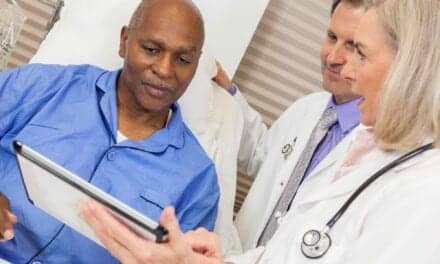The American Thoracic Society has a natural intersection with societies of respiratory care professionals and is looking to build on this natural link.
By Thomas R. Martin, MD, president of the ATS
The American Thoracic Society (ATS) is in its third year as an independent organization and is developing strong links with national and international organizations interested in the care of patients with respiratory diseases and critical illness. The ATS has a natural intersection with societies of respiratory care professionals, such as the American Association for Respiratory Care, because most American Thoracic Society members have daily interactions with RCPs in caring for patients with respiratory diseases.
Whether patients are in the hospital, in the intensive care unit (ICU), or at home, pulmonary physicians and nurses provide care side by side with respiratory care professionals. We must build on this natural link between our members and use the stature of our allied organizations to enhance access of our patients to skilled respiratory care, and ensure that the latest developments in scientific information are used to continuously improve the care that we provide for patients.
A Is For Advocacy
The American Thoracic Society is best defined by the letters in its name. “A” is for advocacy, and our Washington, DC, office works for legislation that enhances patient access to respiratory care, and appropriate reimbursement for those who provide respiratory care. This is a time of change in the workplace, and new methods to organize critical care and respiratory care are being discussed. The ATS has joined with the American College of Chest Physicians and the Society of Critical Care Medicine (SCCM) to sponsor a joint task force that is evaluating ways to restructure critical care in order to make better use of our work force. The constraints considered by the task force are that no additional money is added to the system, and the size of the work force remains constant. “Virtual ICUs” are being discussed, in which distant physicians use television monitors and computers to communicate with ICU staff and monitor their patients. Whatever our point of view, we need to have a strong and proactive advocacy program or we will lose the ability to influence these strong currents of change.
T Is For Treatment and Training
The ATS works to promote the highest quality treatment for patients, and the training of physicians, nurses, respiratory care professionals, and other health care providers interested in respiratory and critical care. In this context, the American Thoracic Society and respiratory care professional societies can work together effectively to promote the training and continuing education of RCPs, who are in short supply. Hospitals have a strong interest in maintaining the respiratory therapy work force, and we need to work proactively with hospitals to develop novel ways to enhance training of RCPs. Respiratory care professionals also have a major role in home care, and this role is critically important in the outpatient monitoring of patients with respiratory diseases.
S Is For Science
The American Thoracic Society promotes the latest in scientific research and training. Its members receive almost $300 million in federal and private research grants, and its members publish the latest scientific developments in the ATS scientific journals, which include the American Journal of Respiratory and Critical Care Medicine and the American Journal of Respiratory Cell and Molecular Biology.
Science is the foundation of the care that we provide for our patients, and scientific research gives hope to patients with difficult respiratory diseases such as acute respiratory distress syndrome (ARDS), cystic fibrosis, interstitial lung disease, asthma, tuberculosis, and chronic obstructive pulmonary disorder. Patients and their families tell us that learning about scientific developments in the areas of respiratory disease and critical care helps them to feel a part of the community that is working to improve their care. Research in respiratory care has recently led to an improved ventilatory strategy for patients with ARDS. The National Institutes of Health (NIH) ARDS net trial of low tidal volume ventilation in patients with ARDS was a landmark trial that brought together the funding and guidance of the Lung Division of the NIH, ATS investigators at 10 different centers, and RCPs who work in the ICUs of participating hospitals. This team effort produced the first major advance in the treatment of ARDS since 1967, when Ashbaugh and Petty, who worked at the University of Colorado, Denver, first described the syndrome.
International Interaction
The American Thoracic Society has major interactions with international organizations on every continent. Its members have established professional networks that bring together international centers for research, and the ATS has links with other organizations in pulmonary medicine and critical care. A recent consensus conference on nosocomial pneumonia was sponsored by the ATS, the European Society of Intensive Care Medicine, the Societe de Reanimation de Langue Francaise, the European Respiratory Society, and the SCCM. This international effort brought together world leaders on the subject of ventilator-associated pneumonia, and a panel of judges was charged with reviewing the scientific evidence presented in order to establish a consensus about diagnosis and treatment. This type of international cooperation is vital if we are to guarantee patients around the world the best and most consistent respiratory care.
ATS members and respiratory care professionals have a common mission. By working together, we can have a strong and consistent voice for advocacy on behalf of our patients, support of the highest quality treatment for them, training of an appropriate work force, and advancement of the science of respiratory disease and critical care medicine.
RT
Thomas R. Martin, MD, is president of the American Thoracic Society, New York.










